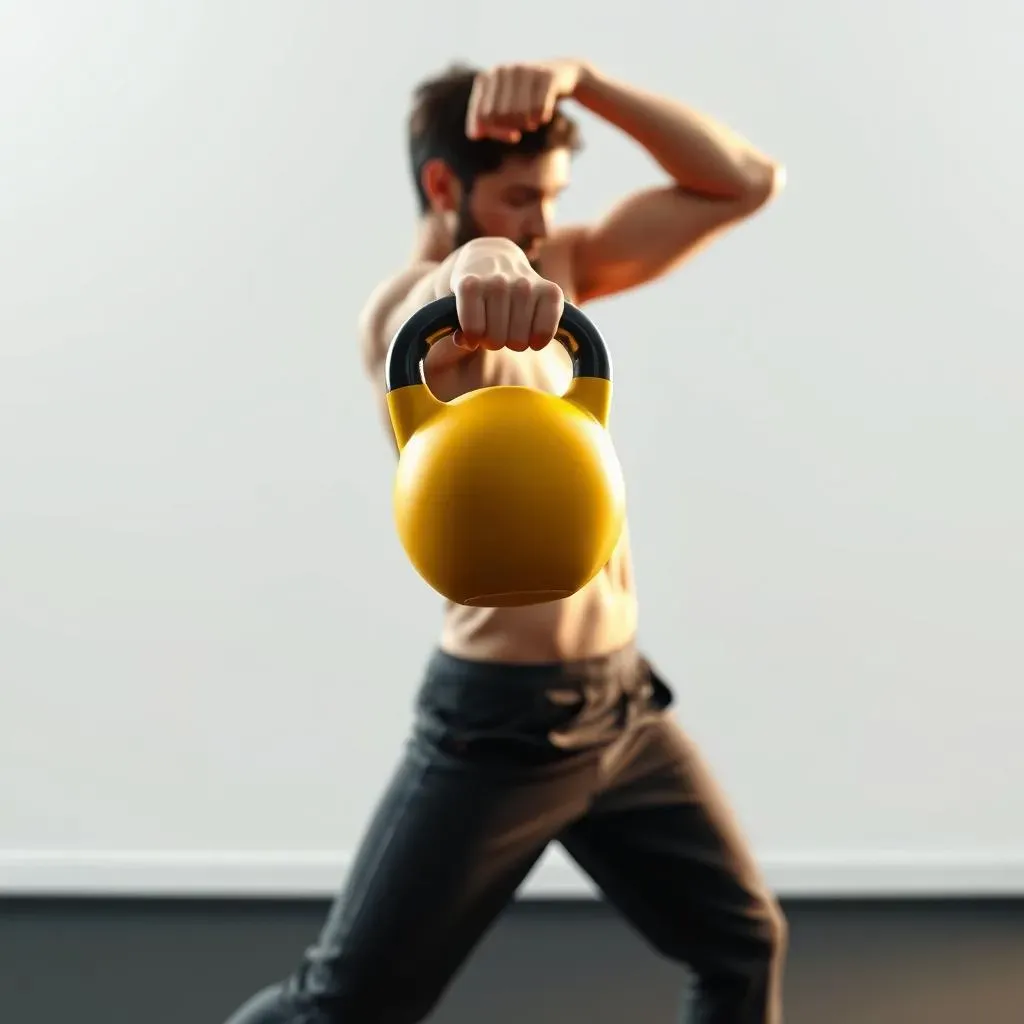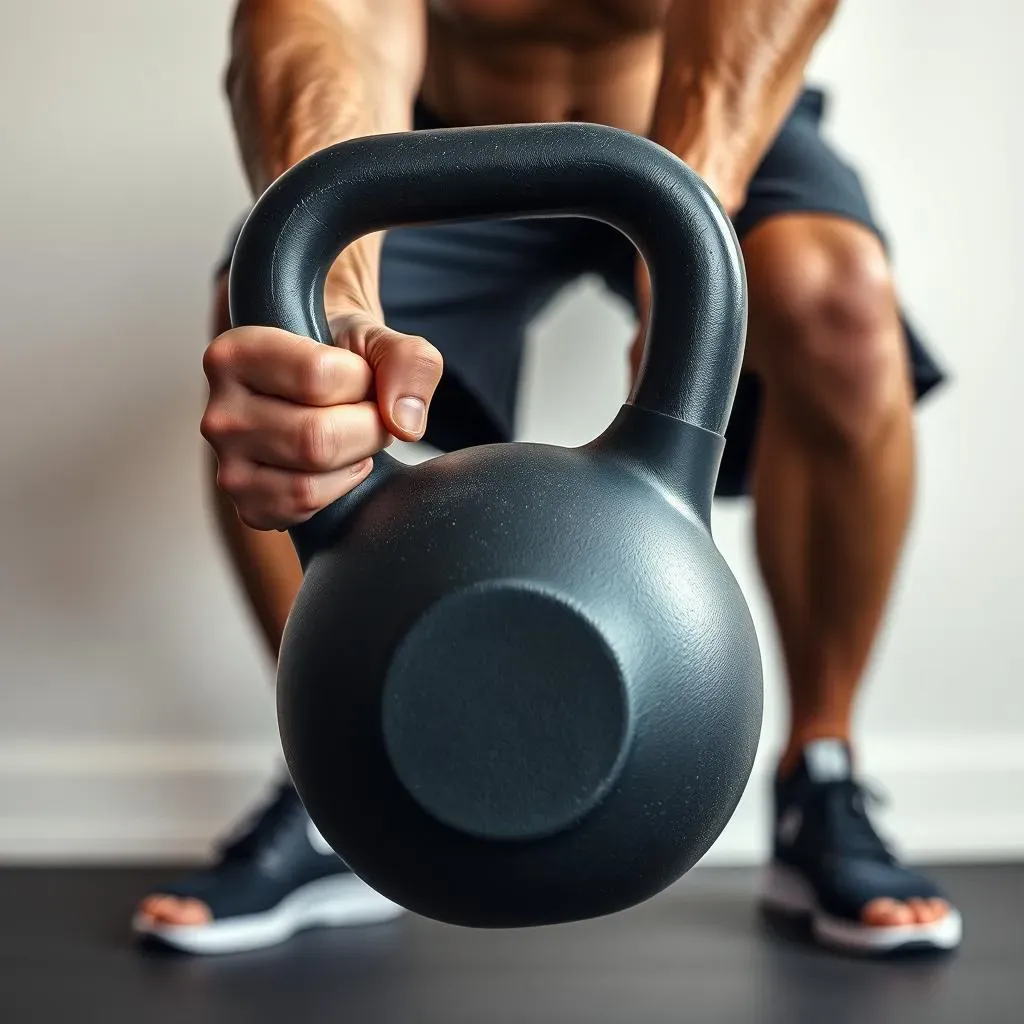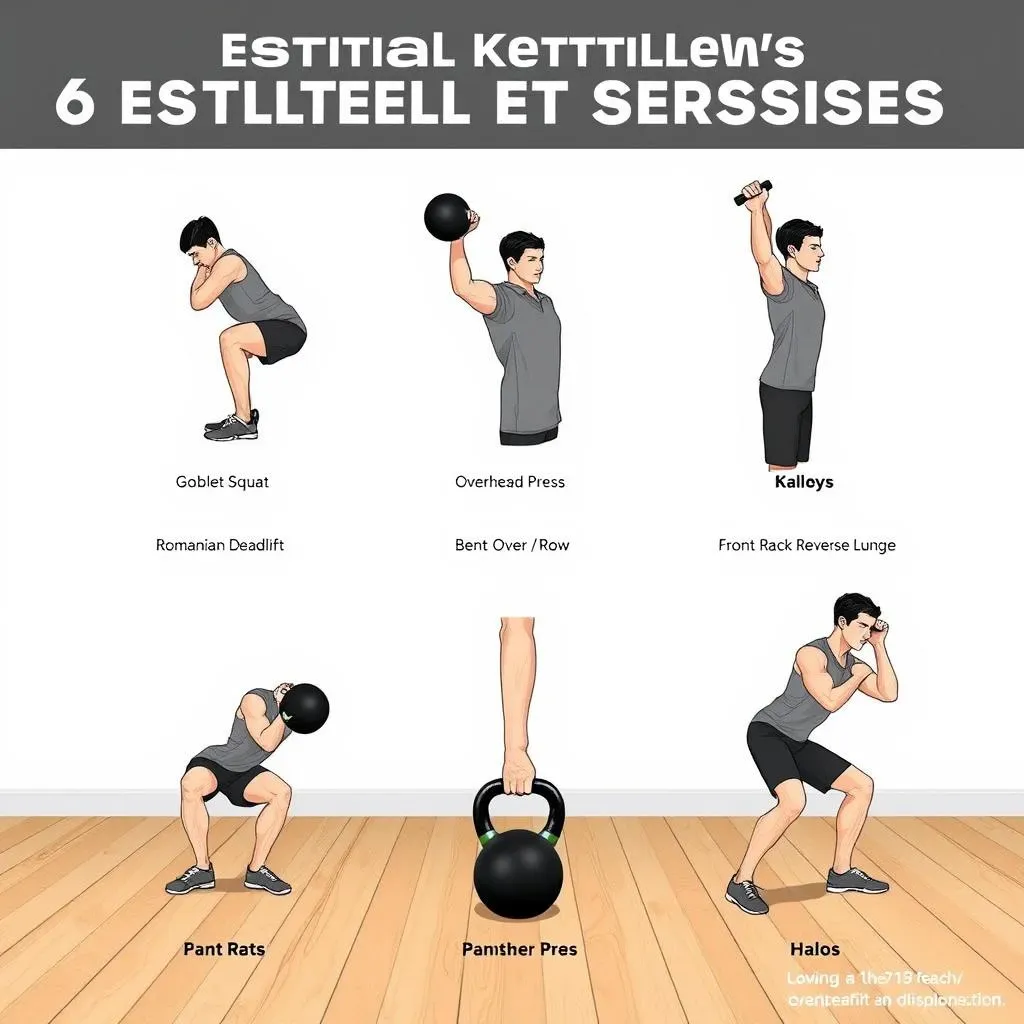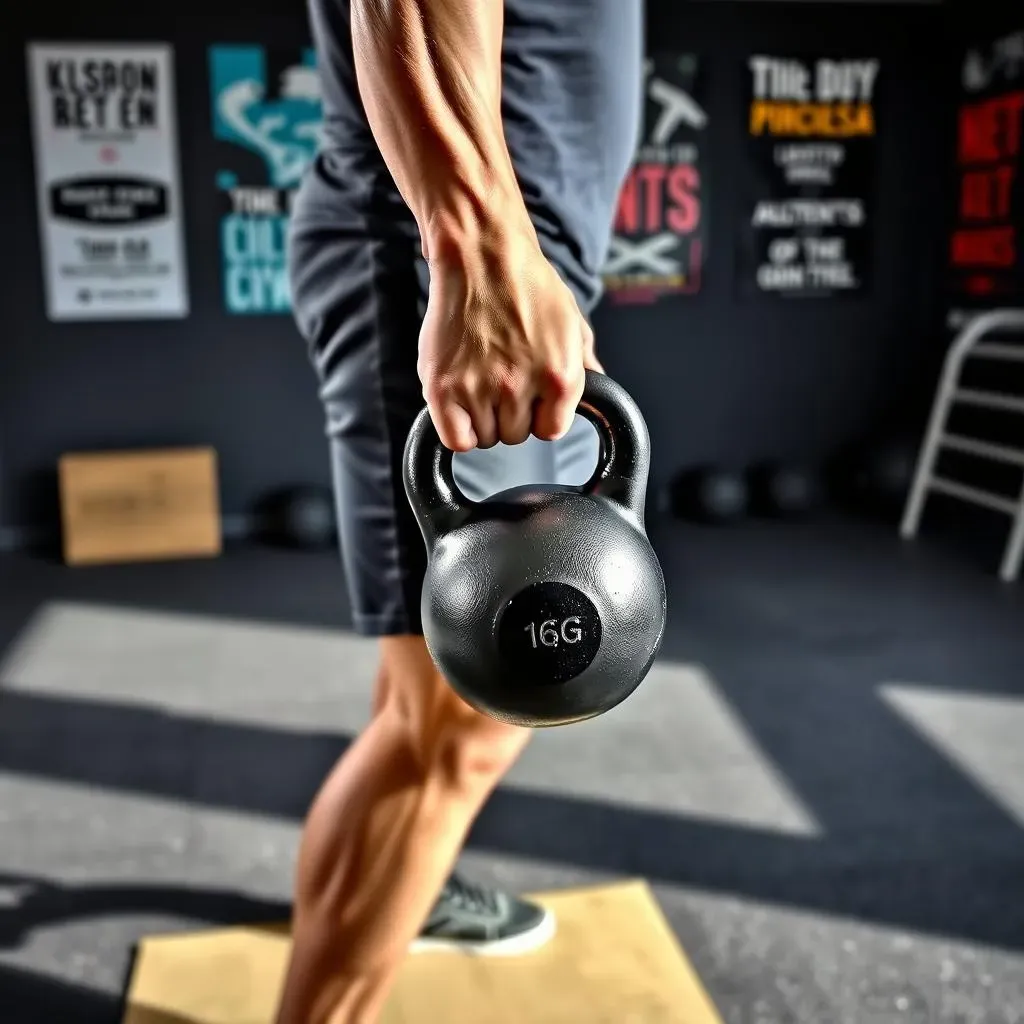Table of Contents
Ever feel like your workout routine needs a shake-up? Maybe you're bored of the same old gym machines, or perhaps you're just looking for something that packs a serious punch in a short amount of time. That's where the basic kettlebell swing workout comes in. It’s not just about swinging a weight around; it's a full-body power move that can transform your strength, endurance, and even your physique. This guide isn't some dry textbook; it’s your friendly nudge into the world of kettlebells. We'll start with a simple, effective 20-minute routine perfect for beginners, then we'll get into the nitty-gritty of how to hold a kettlebell, what other exercises you can do, and how to pick the right kettlebell for your basic kettlebell swing workout. Think of this as your personal cheat sheet to becoming a kettlebell boss. So, ditch the dumbbells for a bit, and let's swing into action!
The 20Minute Basic Kettlebell Swing Workout for Beginners

The 20Minute Basic Kettlebell Swing Workout for Beginners
Quick Start:
The 20-Minute Kettlebell Blast
Alright, let's get right to it. You're itching to swing some iron, I get it. This isn't about spending hours in the gym; it's about getting an efficient workout that fits into your busy life. This 20-minute basic kettlebell swing workout is designed to get you moving, build strength, and learn the ropes of kettlebell training. We're talking about a circuit, which means you'll move from one exercise to the next with minimal rest. It's going to be quick, it's going to be challenging, but most importantly, it’s going to be effective.
We're not aiming for perfection on day one, but we are aiming for progress. This workout is a fantastic starting point if you're new to kettlebells. It will get you comfortable with the movement patterns and help you develop the foundational strength you'll need to move to more challenging workouts. The goal? To get you sweating, feeling strong, and excited about your new kettlebell journey.
The Workout:
What You'll Be Doing
So, what exactly are you going to be doing for those 20 minutes? Here's the breakdown: you'll be doing a circuit of six exercises. Each exercise will be performed for a certain number of repetitions. The exercises are: Halos, Goblet Squats, Overhead Presses, Kettlebell Swings (or Romanian Deadlifts), Bent Over Rows, and Front Rack Reverse Lunges. You'll be moving through these exercises with very little rest between them. After completing one round of all six exercises, you'll take a short break, then you'll repeat the circuit for a total of 3-4 rounds, depending on your fitness level. This keeps your heart rate up and your muscles working hard. Remember to focus on maintaining good form over pushing for too many reps. This will help you avoid injury and get the most out of each move.
Exercise | Reps | Sets |
|---|---|---|
Halos | 8 each side | 3-4 |
Goblet Squats | 10 | 3-4 |
Overhead Presses | 8 | 3-4 |
Kettlebell Swings or Romanian Deadlifts | 15 | 3-4 |
Bent Over Rows | 8 each side | 3-4 |
Front Rack Reverse Lunge | 6 each side | 3-4 |
Form First:
Technique Matters Most
Now, before you start flinging that kettlebell around like a toy, let's talk about form. Proper form is key to preventing injuries and maximizing the benefits of each exercise. For instance, with the kettlebell swing, it’s not about using your arms to lift the weight, but using your hips to generate the power. Think of it like a hinge, not a squat. The kettlebell should be an extension of your arm, not something you're pulling up with your shoulder. We'll get into the specific mechanics of each exercise in later sections, but for now, remember to keep your core engaged, your back straight, and your movements controlled. It's better to do fewer reps with good form than many reps with bad form. Trust me, your body will thank you later.
And if you're unsure about any of the movements, don't hesitate to check out some videos or ask a fitness professional for guidance. It's always better to be safe than sorry. It's also a good idea to record yourself doing the exercises to see if you're keeping the correct form. It's amazing how much you can improve when you see yourself in action.
How to Hold a Kettlebell Properly for the Basic Kettlebell Swing

How to Hold a Kettlebell Properly for the Basic Kettlebell Swing
The Grip:
It's All in Your Hands
Okay, so you've got this cannonball with a handle, but how do you actually hold it? It's not as simple as just grabbing on. For the basic kettlebell swing, you want a grip that’s secure but not too tight. Imagine you're shaking someone's hand, but instead of their hand, you're holding the kettlebell's handle. Your grip should be firm enough that the kettlebell doesn't slip, but relaxed enough that you aren't tensing your forearms. Think of it as a 'hook' grip where the handle sits in the base of your fingers and palm, rather than a death grip. This allows the power to come from your hips and core, not your arms.
A common mistake is to grip the handle too tightly. This causes you to use your arms to lift the kettlebell, which will lead to fatigue and muscle strain in your arms and shoulders. You want the kettlebell to feel like an extension of your arm, not something you're holding on for dear life. So, relax your hands, find that sweet spot, and let the movement flow. It might feel odd at first, but with practice, it will become natural. You'll know it's right when you feel the power coming from your hips and core, not your biceps.
The Stance:
Feet Firmly Planted
Now that you've got the grip down, let's talk about your stance. Your feet should be about shoulder-width apart, maybe a little wider, like you're preparing to jump. Imagine you're standing on train tracks, not a tightrope. This wider stance provides a solid base for your swing and lets your hips do their thing. Your toes should point slightly outward. This will help you engage your glutes and hamstrings, which are the muscles you'll be using to generate power for the swing. Think of it like you're setting up for a powerful jump, because, in a way, that's what you're doing.
Another important thing to remember is that your weight should be evenly distributed across your feet. You don't want to be leaning too far forward or backward, because that will cause you to lose balance and reduce the power of your swing. You should be standing tall, with your core engaged, and your shoulders relaxed. Your spine should be in a neutral position, not rounded or arched. Think of it like you're standing tall and proud, ready to take on the world, or at least a few kettlebell swings. Remember, a solid stance is the foundation of a great swing. Get it right, and the rest will follow.
Grip Tip | Stance Tip | Posture Tip |
|---|---|---|
Loose, "hook" grip | Shoulder-width apart | Core engaged, back straight |
Handle in base of fingers/palm | Toes pointed slightly out | Weight evenly distributed |
Avoid death grip | Weight evenly distributed | Relaxed shoulders |
6 Essential Kettlebell Exercises for Beginners (Beyond the Basic Swing)

6 Essential Kettlebell Exercises for Beginners (Beyond the Basic Swing)
Beyond the Swing:
Expanding Your Kettlebell Arsenal
Alright, so you're getting the hang of the basic kettlebell swing, that's fantastic! But the world of kettlebells is so much bigger than just one move. It's like discovering that there's more to pizza than just pepperoni. Now, let's talk about some other awesome exercises that you, as a beginner, should add to your routine. These moves will not only give you a more well-rounded workout but will also help you understand how to use your kettlebell in different ways. We're going to keep things simple, effective, and, dare I say, fun! These are the exercises that will build a solid foundation for more advanced moves down the road. It's time to level up your kettlebell game, one exercise at a time.
We're not talking about complicated, acrobatic feats here, just solid, fundamental movements that will challenge your body and help you build strength and coordination. These exercises are designed to be scalable, which means you can adjust them to fit your current fitness level. Remember, it's all about progress, not perfection. So, let's explore the world of kettlebells and discover the amazing things your body is capable of.
The Lineup:
Essential Moves
Okay, so what are these magical exercises I've been talking about? First, we have the **Goblet Squat**. It's like a regular squat, but you hold the kettlebell close to your chest, which helps you engage your core and improve your squat depth. Then there's the **Overhead Press**, which is a great way to build shoulder strength and stability. Next up is the **Romanian Deadlift (RDL)**. This move targets your hamstrings and glutes, and it's a fantastic exercise for improving your hip hinge, which is crucial for the swing. We also have the **Bent Over Row**, which will help you strengthen your back and biceps. And let's not forget the **Front Rack Reverse Lunge**, which is a great way to improve your balance and leg strength. Finally, we have **Halos**, which are great for mobility and shoulder health. Each of these exercises works different muscles and movement patterns, giving you a well-rounded workout.
These exercises are not just random moves; they're carefully selected to build a strong foundation and improve your overall fitness. They also work together synergistically to enhance your performance in the kettlebell swing. Think of them as the supporting cast that makes the star performer (the swing) shine even brighter. Each exercise also provides a different challenge to your muscles, ensuring that you are not overworking any one area. This is important for injury prevention and for overall muscle balance. It's like building a house; you need a strong foundation before you can add the roof.
Exercise | Benefit |
|---|---|
Goblet Squat | Engages core, improves squat depth |
Overhead Press | Builds shoulder strength and stability |
Romanian Deadlift | Targets hamstrings and glutes |
Bent Over Row | Strengthens back and biceps |
Front Rack Reverse Lunge | Improves balance and leg strength |
Halos | Improves mobility and shoulder health |
Why These Moves?
The Big Picture
You might be wondering why I'm recommending these specific exercises. Well, it's because they all work together to build a strong, functional body. They're not isolated movements; they're part of a system. The goblet squat helps with your overall leg strength and core stability, which carries over to almost every other exercise. The overhead press builds shoulder strength, which is important for everything from carrying groceries to doing push-ups. The Romanian deadlift is key to developing a strong posterior chain, which is essential for good posture and power. The bent over row works the back and biceps, creating balanced upper body strength. And the front rack reverse lunge helps with balance and coordination, ensuring that you're stable on your feet. Each exercise serves a purpose, and together, they help you become a stronger, more resilient human.
These exercises are also incredibly versatile. You can adjust the weight, the reps, and the sets to make them more challenging or easier, depending on your fitness level. They can be done anywhere, as long as you have a kettlebell. They're also a great way to improve your overall functional fitness, which means that you'll be able to perform everyday tasks more easily. So, it's not just about getting stronger in the gym; it's about getting stronger in life. Think of it like a swiss army knife for your body. Each tool (exercise) has a specific purpose, but together they can handle almost anything.
Choosing the Right Kettlebell: Weight and Type for Your Basic Kettlebell Swing Workout

Choosing the Right Kettlebell: Weight and Type for Your Basic Kettlebell Swing Workout
Picking Your Weapon:
Kettlebell Types
Okay, so you're ready to dive into the world of kettlebells, but wait, there's more to it than just grabbing the first one you see. It’s like choosing a wand at Ollivander's; it needs to be the right fit for you. You'll notice there are two main types: standard and competition kettlebells. Standard kettlebells are what you typically see in most gyms. They have a cast-iron body with a thicker handle. Competition kettlebells, on the other hand, have a steel body and a consistent handle size, regardless of the weight. This means that the handle will feel the same whether you’re using a 12kg or a 32kg kettlebell. For the basic kettlebell swing workout, either type will work just fine, but the competition kettlebell is often favored by serious lifters due to that consistent feel.
The handle of the kettlebell is also something to consider. A thicker handle can be more challenging to grip, which can make the exercises harder. Some kettlebells even have a textured handle, which can improve your grip, especially if you're sweaty. The material of the kettlebell can also make a difference. Some are made of cast iron, while others are made of steel. Steel kettlebells tend to be more durable, but cast iron kettlebells are often more affordable. So, when you're choosing your kettlebell, consider the handle, the material, and the type. It's a personal choice, and the best kettlebell is the one that feels right for you. It's like finding the perfect pair of running shoes; you want something that fits comfortably and allows you to perform your best.
Finding Your Fit:
Kettlebell Weight
Now, the big question: what weight should you start with? It's tempting to grab the heaviest kettlebell you can find and start swinging, but trust me, that's a recipe for disaster. It's better to start lighter and work your way up. For most beginners, a 16kg (35 lbs) kettlebell is a good starting point for men, and a 12kg (25 lbs) kettlebell is often recommended for women. However, these are just guidelines. If you're particularly strong, you might want to start a little heavier, and if you're new to fitness, you might want to start a little lighter. The key is to choose a weight that allows you to perform the exercises with good form. It's better to do 10 reps with perfect form than 20 reps with terrible form.
Don't be afraid to start with a lighter weight than you think you need. It's better to master the movements with a lighter kettlebell and then increase the weight gradually. This will help you build a strong foundation and avoid injuries. Remember, we're not trying to become a world champion on day one. We're trying to build a solid foundation for long-term success. As you get stronger, you'll gradually increase the weight. It's like learning to play an instrument; you start with the basics and then gradually add more complex techniques. So, start light, focus on form, and gradually increase the weight as you get stronger. It's a marathon, not a sprint.
Kettlebell Feature | Considerations |
|---|---|
Type | Standard vs. Competition |
Handle | Thickness, Texture |
Material | Cast Iron vs. Steel |
Weight | Start lighter, focus on form |